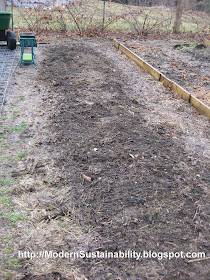Tomato baskets are an important tool for any garden. We use tomato baskets for lots of vegetables, including cucumbers, beans, peas, tomatoes, peppers, tomatillos or even just young seedlings in our orchard that need to be protected until they are a little larger. These are made from 4' tall, 2" x 4"pattern, fence fabric that is cut into 3-4' sections that are then rolled into cylinders. You can buy the 14 gauge, galvanized, welded wire fence fabric in 50' or 100' sections. If you buy a 50' section, you can make about 14 tomato baskets. I expect my tomato baskets to last about 10 years each. If you go with a thicker steel (heavier gauge wire) they will last longer, but they are much harder to cut and bend into baskets, and the fence fabric costs a lot more. With 14 gauge wire you can easily cut them with a simple wire cutter or pliers that have a cutting area above the handle.

The stubs where the fence fabric is cut (to make 3-4' sections) are bent over to attach the two ends to make a cylinder.

The bottom is then cut off so that there are 4" prongs that will stick into the ground to stabilize the basket anchored into the ground.

These prongs stick into the soil to hold the basket in place.

Young beans and okra growing up with the support of tomato baskets to pretect them from critters as well as support them as they get taller. They also provide the structure for vining peas, beans and cucumbers to climb.

A young Pecan tree with a tomato basket protecting it from deer rubbing in the winter.
I also place these around young Blueberry and other berry bushes until they are large enough not to be trampled by kids or dogs. Tomato baskets are a very important part of gardening at our house.


In the off season these stack well for storage.















